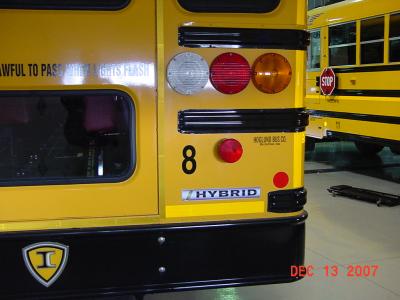The Sigourney Community School District in southeast Iowa, has been using one of the country's first hybrid school buses since Jan. 3. And they're pretty excited about it.
Dan Taghon, director of transportation and driver, said the V-8 diesel engine and electric motor gave him plenty of acceleration. “It has quite a bit of get up and go,” he said. “You push the pedal and it takes right off.”
Advanced Energy, a nonprofit corporation based in Raleigh, N.C., led the effort to bring the country’s first 19 hybrid school buses to school districts in 11 states.
Researchers at Iowa State’s Center for Transportation Research and Education worked with Advanced Energy for more than two years to bring the hybrid buses to Iowa. Dennis Kroeger, a transportation research specialist for the center, secured grants that paid for most of the $217,000 cost of each bus. The districts each paid about $70,000, the cost of a conventional bus.

The project is also supported by grants of $220,000 from the Iowa Energy Center based at Iowa State; $120,000 from the New York State Energy Research and Development Authority and $83,000 from the Iowa Department of Natural Resources and the School Administrators of Iowa. The grant money also pays for a three-year study of the buses’ performance.
The buses feature electric drive trains that can move the buses at street speeds; their diesel engines take over at higher speeds. They also have technology that captures some of the energy of braking and uses that to help recharge their own batteries.
Kroeger said researches will soon hook the buses to portable emissions monitors. They’ll also download information from the engines’ computers. They’ll use the data to evaluate the buses’ performance, fuel efficiency and emissions.
And the hybrids should do a lot better than standard buses. Kroeger said fuel efficiency could jump 40 percent to 50 percent, from six miles per gallon for a standard bus up to 10 or 11 miles per gallon for the hybrids.
Taghon, with the Sigourney district, said last week he still hadn’t had to refuel his district’s hybrid bus. After eight runs, he said the bus still had half to three-quarters of a tank of diesel.
That has Kroeger thinking hybrid technology has a future in school buses.
“This technology is new to school buses,” Kroeger said. “But hybrid electric technology isn’t brand new. So the development issues have been worked out. We expect these buses will definitely be able to stretch the fuel dollars.”






Comments